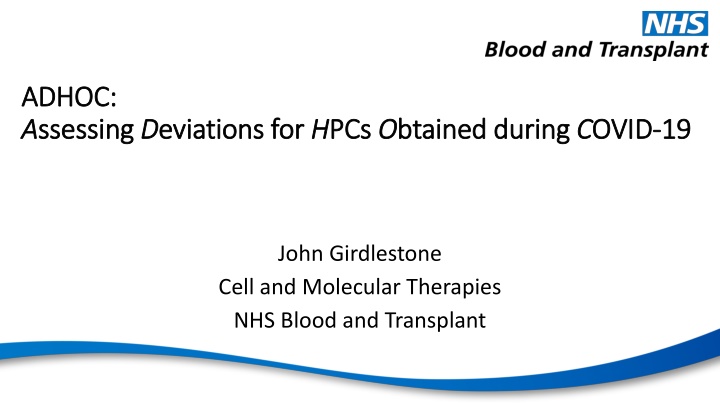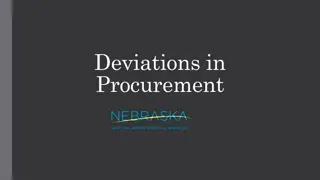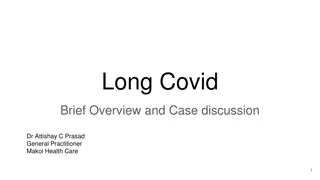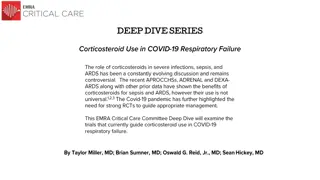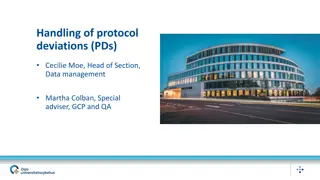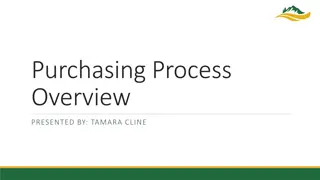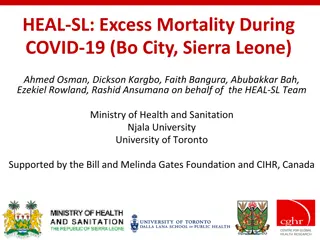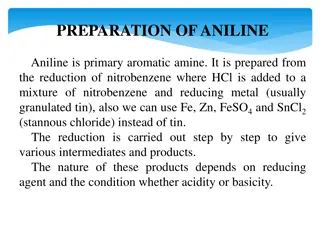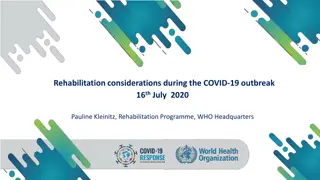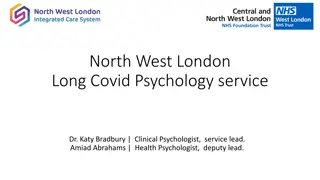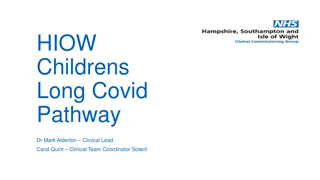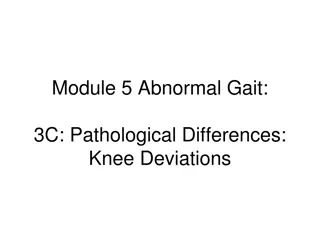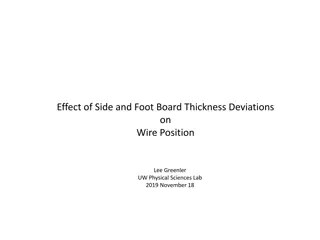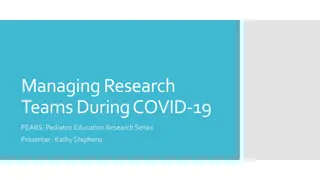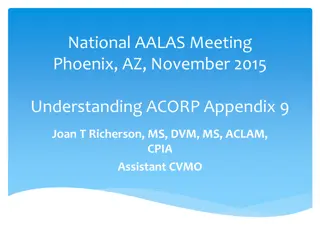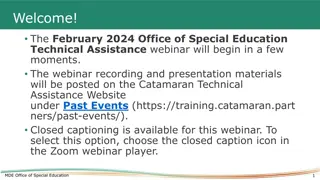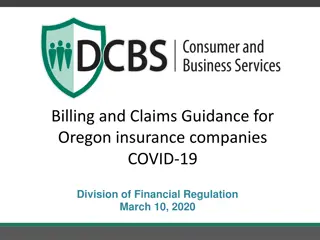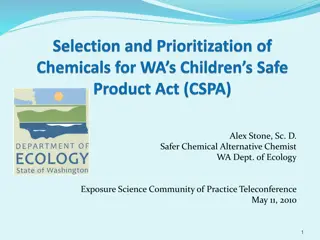Assessing Deviations for HPCs Obtained during COVID-19
Assessing deviations for hematopoietic progenitor cells obtained during the COVID-19 pandemic. Explore the impact, challenges, and solutions in cellular therapy products and processes amidst the pandemic, including logistical changes and cryopreservation recommendations.
Download Presentation

Please find below an Image/Link to download the presentation.
The content on the website is provided AS IS for your information and personal use only. It may not be sold, licensed, or shared on other websites without obtaining consent from the author.If you encounter any issues during the download, it is possible that the publisher has removed the file from their server.
You are allowed to download the files provided on this website for personal or commercial use, subject to the condition that they are used lawfully. All files are the property of their respective owners.
The content on the website is provided AS IS for your information and personal use only. It may not be sold, licensed, or shared on other websites without obtaining consent from the author.
E N D
Presentation Transcript
ADHOC: ADHOC: A Assessing ssessing D Deviations for eviations for H HPCs PCs O Obtained during btained during C COVID OVID- -19 19 John Girdlestone Cell and Molecular Therapies NHS Blood and Transplant
ADHOC: ADHOC: A Assessing ssessing D Deviations for eviations for H HPCs PCs O Obtained during btained during C COVID OVID- -19 19 A BEST A BEST Collaborative Study Collaborative Study Evaluating the Impact of the COVID Evaluating the Impact of the COVID- -19 19 Pandemic on Cellular Therapy Products and Processes Pandemic on Cellular Therapy Products and Processes BEST: Biomedical Excellence for Safer Transfusions BESTCollaborative.org
ADHOC ADHOC Fundamental change to a critical process at short notice ad hoc dh k , h k adverb 1. For the specific purpose, case, or situation at hand and for no other. 2. On the spur of the moment.
ADHOC ADHOC Fundamental change to a critical process at short notice Almost all allogeneic donations depended on just-in-time delivery of stem cell products for fresh infusion into a conditioned patient
ADHOC ADHOC Fundamental change to a critical process at short notice Almost all allogeneic donations depended on just-in-time delivery of stem cell products for fresh infusion into a conditioned patient In March 2020 the WMDA advised a switch to cryopreservation of stem cell products to ensure that they were available before conditioning started - Logistics of delivery during lockdown and transport cancellations - Patient or donor becoming Covid+
Possible Problems? Possible Problems? We cryopreserve Autologous collections all the time, shouldn t healthy donor cells cope as well or better with freeze/thaw?
Possible Problems? Possible Problems? We cryopreserve Autologous collections all the time, shouldn t healthy donor cells cope as well or better with freeze/thaw? - Autos are frozen on the day or within 24 hours of collection - Unrelated donations are often older than 24 hours on arrival
Possible Problems? Possible Problems? We cryopreserve Autologous collections all the time, shouldn t healthy donor cells cope as well or better with freeze/thaw? - Autos are frozen on the day or within 24 hours of collection - Unrelated donations are often older than 24 hours on arrival Retrospective studies have indicated delayed neutrophil and platelet engraftment, and increased non-relapse mortality (NRM) and relapse with frozen allogeneic donations* * Hsu et al. Transplant Cell Ther. 2021;27(6):507-16.
Possible Problems? Possible Problems? We cryopreserve Autologous collections all the time, shouldn t healthy donor cells cope as well or better with freeze/thaw? - Autos are frozen on the day or within 24 hours of collection - Unrelated donations are often older than 24 hours on arrival Retrospective studies have indicated delayed neutrophil and platelet engraftment, and increased non-relapse mortality (NRM) and relapse with frozen allogeneic donations* - But, most of these cryopreservations were undertaken due to urgent medical issues concerning the patient, which complicates the interpretation of outcomes. * Hsu et al. Transplant Cell Ther. 2021;27(6):507-16.
ADHOC Study ADHOC Study Carried out to capture a snapshot of potential disruptions occurring around the time of the change to cryopreservation of allogeneic products. Primary focus was on interests of the Stem Cell Laboratory
ADHOC Questionnaire: Please provide 5-10 products each from before and during the period of implementing freezing due to Covid19 contingencies General Laboratory Information Date universal cryopreservation of HPC allogeneic products started at your institution due to Covid 19 Average number of HPC products cryopreserved per month pre-Covid19 (allo+auto) Average number of HPC products cryopreserved per month post-Covid19 (allo+auto) Total number of HPC bags cryopreserved post-Covid19 (allo) Day 0 Laboratory information defined by institution consecutive consecutive Product specific information Before Covid During Covid Contingency Period Collections* 1 2 3 4 5 6 7 8 9 10 11 12 13 14 15 16 17 18 19 20 Timing Collection date (local) (eg. 20 Sept 2020) Collection time (local) (eg. 13:00) Receipt date Receipt time Processing date (if cryopreserved) Processing time (time of cryopreservative addition) Patient Infusion date (eg. 27 Sept) * Timing Allogeneic Product information at receipt Product type: Donor mobilization: Temperature of product on arrival (oC) WBC count of product (10^6 / mL) Viability (%): TNC/CD45 Viability (%): CD3 Viability (%): CD34 CD34 dose (10^6 CD34 / kg) Cryopreserved ? Diluted before cryopreservation ? If yes: Diluent WBC count of cryopreserved product Cryopreservation solution components (Albumin/Plasma) (final % DMSO) Product information prior to cryopreservation Allogeneic Product information after cryopreservation Viability (%): TNC/CD45 Viability (%): CD3 Viability (%): CD34 Assay performed before/after issue for Tx Source of testing ** Product information after cryopreservation Patient Information Disease category (Leukemia, MDS, SAA, non-malignant, etc.) Conditioning regimen: Infused dose (10^6 CD34/kg ) Days to neutrophils (0.5x10^9/L) Days to platelets (20x10^9/L) Adverse event reported * Recipient information * ** 5-10 allo patients treated immediately before, and 5-10 after switch to general cryopreservation 5-10 allo patients treated after switch to general cryopreservation
ADHOC Contributors Suzanne R. Thibodeaux* Victoria Day Magali J. Fontaine* Maria Gabelli Nicola Gardiner Tamara Geach Joseph Schwartz* Ljiljana V. Vasovic Rachael Wyre John Girdlestone* Washington University School of Medicine, St. Louis, MO, USA NHSBT Barnsley, UK University of Maryland School of Medicine, Baltimore, USA Great Ormond Street Hospital for Children, London, UK St. James s Hospital, Dublin, Ireland The London Clinic, London, UK Mount Sinai Health System, New York, NY, USA Weill Cornell Medicine, New York, NY, USA NHSBT Southampton, UK NHSBT Oxford, UK * Biomedical Excellence for Safer Transfusions BEST Collaborative
Total Cryopreservation Activity Average Cryopreservations / Month for 6 Centres Average Cryopreservations / Month for 6 Centres 18 16 14 12 10 Series2 Auto 8 Series1 Allo 6 4 2 0 Before After
Chi Chi2 2 value Before Before N (%) N (%) After After N (%) p p- -value Yes 6 (8) 67 (94) <0.0001 Cryopreserved Cryopreserved No 66 (92) 4 (6) Plasma 4 (67) 11 (16) <0.0001 Cryopreservation Cryopreservation solution solution Albumin Other 2 (33) 0 (0) 50 (75) 6 (8) 5% 0 (0) 0 (0) <0.0001 Final DMSO Final DMSO concentration concentration 10% 6 (100) 57 (85) Other Local National International 0 (0) 25 (35) 14 (19) 33 (46) 10 (15) 23 (32) 20 (28) 28 (40) 0.24 Collection location Collection location HPC A 57 (79) 64 (90) 0.0016 Product type Product type HPC M 15 (21) 7 (10)
Chi Chi2 2 value Before Before N (%) After After N (%) p p- -value Leukemia 39 (54.2) 48 (68.6) 0.105 Myelodysplastic syndrome 12 (16.7) 7 (10) lymphoma 3 (4.2) 3 (4.3) Disease Disease Severe aplastic anemia 1 (1.4) 3 (4.3) non-malignant 3 (4.2) 2 (2.9) other 12 (16.7) 8 (11.3) Not reported Reduced intensity Myeloablative Not reported Yes No Not reported 2 (2.8) 28 (39) 25 (35) 19 (26) 2 (3) 70 (97) 0 (0) 0 (0) 29 (41) 24 (34) 18 (25) 5 (7) 60 (85) 6 (8) 0.94 Conditioning Conditioning 0.062 Adverse Events Adverse Events
Before After Median Mean (n) 95% CI Median Mean (n) 95% CI p-value Time from Collection to Receipt Time from Receipt to Cryo Time from Collection to Cryo Hrs 18.1 17.8 (63) 14.5 21.2 21 18 (68) 14.2 21.9 0.941 Hrs 10.5 10.7 (6) 3.1 18.4 3.2 7.7 (53) 5.6 9.7 0.476 Hrs 18.8 18.7 (5) 3.5 33.9 27.5 26.5 (53) 22.0 31.0 0.38 Temp. at Receipt 7.8 12 (62) 10.0 - 13.9 9 12 (65) 10.2 13.9 0.973 oC CD34 Viability on Receipt % 99.1 97.8 (61) 96.9 98.7 99.4 98.3 (58) 97.5 99.0 0.423 CD34 on Receipt 106/kg 6.2 7 (71) 6.1 7.8 6.4 7.5 (71) 6.5 8.4 0.111 WBC count on receipt 106/mL 179 182 (72) 155.1 208.1 195 208.1 (71) 184.7 231.5 0.143 106/kg CD34 Infused 5.0 5.4 (72) 4.7 6.1 5.5 5.8 (61) 5.1 6.6 0.378 Cryopreserved 23 24.5 (6) 12.9 36.1 23 29.7 (61) 23.4 36.0 0.464 Collection to Infusion (days) Fresh 1.0 0.8 (59) 0.6 1.0 0.5 0.5 (4) -0.07 1.07 0.182 Neutrophil Recovery Days 14 15 (72) 13.9 16.2 16 17.6 (64) 16.1 - 19.1 0.009 Platelet Recovery Days 16 20.7 (65) 16.9 24.6 19 23.5 (53) 19.5 43.0 0.335
Before After Median Mean (n) 95% CI Median Mean (n) 95% CI p-value Time from Collection to Receipt Time from Receipt to Cryo Time from Collection to Cryo Hrs 18.1 17.8 (63) 14.5 21.2 21 18 (68) 14.2 21.9 0.941 Hrs 10.5 10.7 (6) 3.1 18.4 3.2 7.7 (53) 5.6 9.7 0.476 Hrs 18.8 18.7 (5) 3.5 33.9 27.5 26.5 (53) 22.0 31.0 0.38 Temp. at Receipt 7.8 12 (62) 10.0 - 13.9 9 12 (65) 10.2 13.9 0.973 oC CD34 Viability on Receipt % 99.1 97.8 (61) 96.9 98.7 99.4 98.3 (58) 97.5 99.0 0.423 CD34 on Receipt 106/kg 6.2 7 (71) 6.1 7.8 6.4 7.5 (71) 6.5 8.4 0.111 WBC count on receipt 106/mL 179 182 (72) 155.1 208.1 195 208.1 (71) 184.7 231.5 0.143 106/kg CD34 Infused 5.0 5.4 (72) 4.7 6.1 5.5 5.8 (61) 5.1 6.6 0.378 Cryopreserved 23 24.5 (6) 12.9 36.1 23 29.7 (61) 23.4 36.0 0.464 Collection to Infusion (days) Fresh 1.0 0.8 (59) 0.6 1.0 0.5 0.5 (4) -0.07 1.07 0.182 Neutrophil Recovery Days 14 15 (72) 13.9 16.2 16 17.6 (64) 16.1 - 19.1 0.009 Platelet Recovery Days 16 20.7 (65) 16.9 24.6 19 23.5 (53) 19.5 43.0 0.335
Neutrophil Engraftment P=0.009
Platelet Engraftment P=0.335
SUMMARY No significant delays to deliveries, or changes to the state of the stem cell products (eg. Temp, WBC, CD34 dose)
SUMMARY No significant delays to deliveries, or changes to the state of the stem cell products (eg. Temp, WBC, CD34 dose) The proportion of bone marrow donations decreased, consistent with reports from registries
SUMMARY No significant delays to deliveries, or changes to the state of the stem cell products (eg. Temp, WBC, CD34 dose) The proportion of bone marrow donations decreased, consistent with reports from registries Neutrophil engraftment appeared to take several days longer consistent with retrospective studies, but with limited patient numbers we await larger studies from the registries.
SUMMARY No significant delays to deliveries, or changes to the state of the stem cell products (eg. Temp, WBC, CD34 dose) The proportion of bone marrow donations decreased, consistent with reports from registries Neutrophil engraftment appeared to take several days longer consistent with retrospective studies, but with limited patient numbers we await larger studies from the registries. Will transplant centres want to continue with the use of cryopreserved donations?
Acknowledgements Many thanks to the ADHOC laboratory participants and to all the donors, patients, and transplant centre staff who persevered during the plague times.
